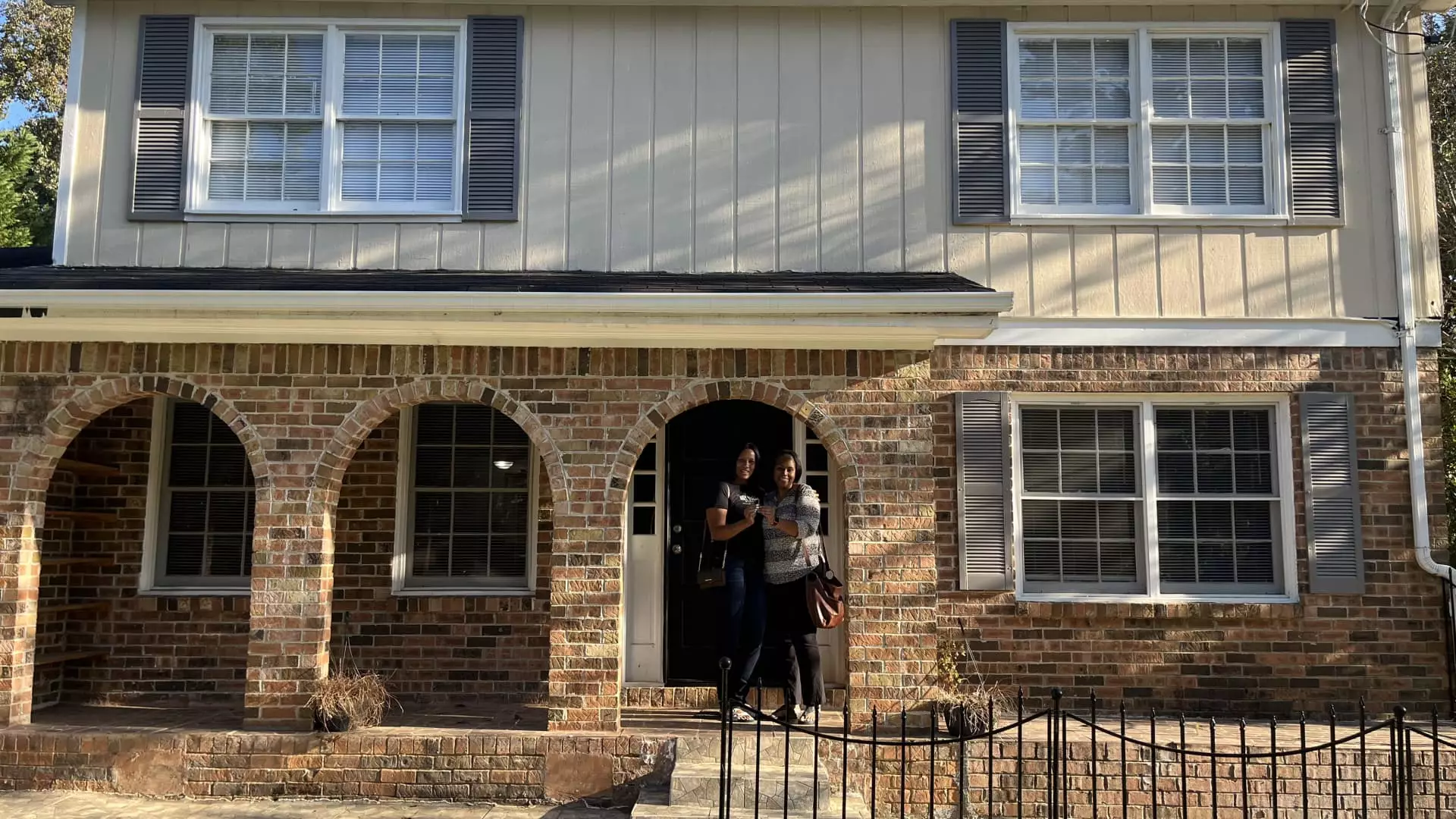The dream of homeownership—a goal many aspire to—has become increasingly complex, particularly in urban settings like Atlanta. With economic constraints and systemic barriers, many first-time buyers are struggling to enter the housing market. In this article, we will explore individual stories, alternative methods to homeownership, and emerging solutions aimed at addressing these pressing issues.
When When Hunnicutt embarked on his apartment search in Atlanta earlier this year, he quickly discovered the harsh realities of the rental market. Repeated application rejections and steep rental rates made the journey feel almost insurmountable. In his viewpoint, managing the often-required income-to-rent ratio, which is often three and a half times the rent, is a daunting task, especially in a market where some landlords seek upwards of $3,000 monthly.
Hunnicutt’s breakthrough came when he found an affordable two-bedroom apartment at $1,050 per month through a real estate investment trust known as Roots. This platform not only provided him with a place to live but also incorporated a novel investment strategy. By channeling his security deposit and earning quarterly rebates as incentives, Hunnicutt is working towards his ultimate goal of homeownership. As he noted, “The end goal is to buy a house, so having investment funds, that passive income, would be very helpful.” Such approaches reflect a shifting landscape where rent may also play a role in future financial building blocks.
The aspiration of owning a home is significantly hindered by rising property values. Current statistical insights indicate that the typical household now needs an annual income of about $113,520 to afford a home in the United States—a stark 35% increase over average earnings. In doing so, the dream of homeownership seems to drift further from reach for many.
One of the greatest obstacles for these aspiring homeowners lies in accumulating sufficient savings for a down payment. Alarmingly, approximately 40% of non-homeowners attributed their situation to inadequate savings, based on data gathered from the 2023 CNBC Your Money Survey. This survey shines a light on the harsh economic realities that many face when they wish to transition from renting to owning.
Fortunately, various down payment assistance programs are available, designed to address these barriers. These can come from a multitude of sources, including state and local governments, non-profits, and financial institutions, each contributing to this essential cause. These programs frequently target first-time buyers and those who meet specific income qualifications.
A noteworthy aspect of many of these programs is their requirement for participants to undertake homebuyer education courses. These courses serve to demystify the home-buying process and ensure that participants are well-versed in the associated obligations. It is also common for programs to stipulate that buyers work with certain lenders or contribute personal savings toward their purchase.
As an illustration, Alternatives Federal Credit Union in Ithaca, New York, offers between $9,000 and $20,000 for eligible participants, while the Chicago Housing Authority provides similarly substantial levels of support. Such financial assistance plays a pivotal role in promoting equity in homeownership, especially in communities historically marginalized by practices like redlining.
Targeting systemic barriers is paramount, particularly for communities adversely affected by past discriminatory practices. Black Americans, for instance, have borne the brunt of a long history of unfair lending practices, exclusionary zoning laws, and other obstacles that obstruct their paths to homeownership. Nikitra Bailey, an executive vice president at the National Fair Housing Alliance, emphasizes the significance of programs aimed at first-generation homebuyers, stating that these initiatives are crucial for breaking down long-standing economic disparities.
Interestingly, a persistent misconception surrounding down payments is that buyers need to contribute a hefty 20% of the home purchase price. Contrary to this belief, data indicates that many first-time buyers successfully manage with as little as 8%. Some loans offer even laxer requirements, including down payment options as low as 3.5%. While it is essential to consider private mortgage insurance (PMI) with smaller down payments, the landscape of home financing is becoming more accessible.
For those intent on homebuying within a defined timeline, thoughtful financial planning is essential. While some may look to their 401(k) accounts as a source for down payments, financial experts typically advise against this unless absolutely necessary. Alternatives that emphasize saving over investing include high-yield savings accounts, certificates of deposit, and Treasury bills. These options are better suited for individuals planning to make a purchase within a few years.
While the path to homeownership remains fraught with challenges, innovative approaches like those offered by Roots and down payment assistance programs are carving out new opportunities. By understanding the market resources and encouraging equitable access to homeownership, aspiring buyers can take meaningful steps toward achieving their goals. Ultimately, with the right education and support systems in place, the dream of homeownership can shift from distant wishful thinking to a tangible reality.

